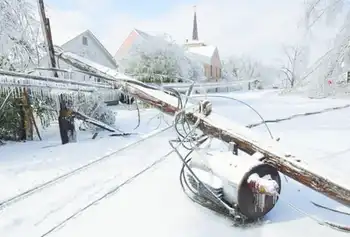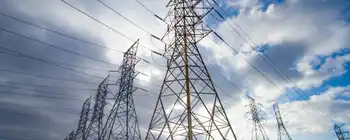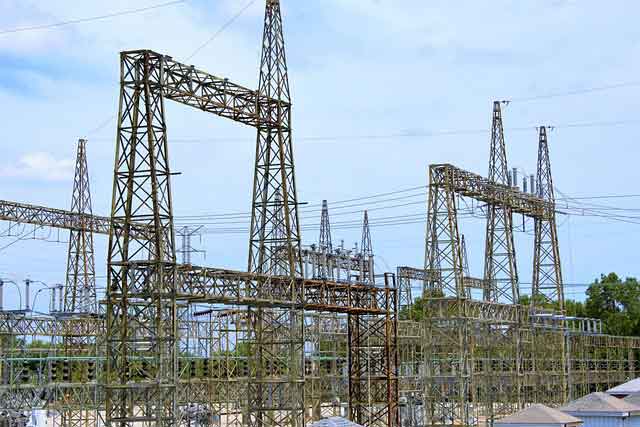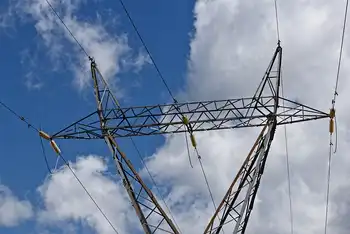Company, state propose two billion-dollar transmission effort
HELENA, MONTANA - Gov. Brian Schweitzer and a Canadian energy firm said that siting and permitting work is under way on a $2 billion power line from Montana to the Southwest, calling it a potential huge economic boost for the state.
Dubbing it the "largest construction project ever announced in Montana," Schweitzer said the power line will help develop energy projects in central and Eastern Montana that will provide affordable power to consumers.
"This transmission project will be a huge boost to the economy of the state and will help with future power costs to Montanans," he said.
Schweitzer and officials from TransCanada, a pipeline and power-generation company based in Calgary, unveiled an agreement on how TransCanada will pay for state regulatory reviews of the 500-kilovolt line from Eastern Montana to Las Vegas. The agreement also says state regulators will work closely with TransCanada on permit applications and environmental reviews needed before construction of the power line, known as the NorthernLights Transmission project.
The proposed line is designed primarily to transport power generated in Montana and elsewhere along the line to booming urban centers in the Southwest, such as Las Vegas and Phoenix.
Brad Thompson, vice president of power growth for TransCanada, joined Schweitzer at a Capitol news conference to announce the step forward on the project.
Thompson said many steps remain for the power line to become a reality, and that the soonest it could be completed would be 2011 or 2012.
However, Thompson said he's confident the project eventually will go forward because Montana has the wind and coal resources to generate huge amounts of electricity to serve fast-growing demand in the Southwest.
"Montana has thousands of megawatts of (potential) clean and green energy projects, but you do need infrastructure to get those done," he said.
"When TransCanada says they're going to move, they will," Schweitzer said.
The line would originate somewhere in Eastern Montana, near a major power project, head west to Townsend and then go south through Idaho and Nevada, Thompson said.
The high-voltage, direct current line would be like an electronic superhighway, picking up power at a few selected spots and then delivering it to its final destination in the Southwest, Schweitzer administration officials said.
Thompson said it could carry up to 3,500 megawatts of power, which is more power than is consumed in Montana.
TransCanada, which had $6 billion in gross revenues last year, could finance part or all of the line itself, Thompson said, but the project won't go forward until power developers and utilities in the Southwest work out deals to generate, transport and buy the power.
The agreement between TransCanada and the state says the company is putting up $10,000 initially to cover costs of the pre-permit process. The company agreed to continue to pay for additional regulatory costs during the lengthy review process.
The state won't begin work on any regulatory task unless a budget has been established and TransCanada has paid the appropriate fee, the agreement said.
Earlier this spring, Schweitzer and the governors of Idaho and Nevada signed a "memo of understanding" to work collaboratively on the permitting process for the high-voltage line.
Thompson said before construction can begin, the company has many tasks to accomplish, such as completing environmental studies, securing right of way for the line and getting approval from federal agencies.
However, the critical element will be buy-sell agreements between utilities and power-project generators who want to use the line, he said. Without those, the line won't go forward, he said.
Related News

Canadian Scientists say power utilities need to adapt to climate change
TORONTO - The increasing intensity of storms that lead to massive power outages highlights the need for Canada’s electrical utilities to be more robust and innovative, climate change scientists say.
“We need to plan to be more resilient in the face of the increasing chances of these events occurring,” University of New Brunswick climate change scientist Louise Comeau said in a recent interview.
The East Coast was walloped this week by the third storm in as many days, with high winds toppling trees and even part of a Halifax church steeple. Nova Scotia Power says it has weathered nine storm days so…




